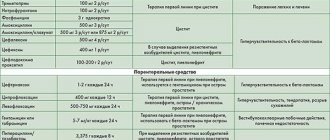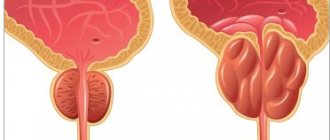Pharmacodynamics and pharmacokinetics
Amoxicillin is a semisynthetic β-lactam antibiotic of the penicillin group with a broad spectrum of antimicrobial activity.
The bactericidal properties of the drug are due to the ability to suppress transpeptidase, disrupt the production of peptidoglycan (supporting protein of cell walls) during periods of division and growth, and provoke the lysis of microorganisms.
Shows activity against Gram (+) aerobes, including Staphylococcus spp. (with the exception of penicillinase-producing strains) and Streptococcus spp. (including Str.pneumoniae and faecalis); Gram (-) aerobes (gonococci, meningococci, Escherichia coli and Haemophilus influenzae, Proteus mirabilis; certain strains of Klebsiella, Shigella and Salmonella, as well as against H. pylori.
Ineffective against strains of Proteus P. rettgeri and vulgaris (they are indole-positive), serrations, pseudomonads, enterobacteria, Morganella morgani. Mycoplasma, rickettsia and viruses are resistant to amoxicillin.
A feature of the dosage form is that the tablets are easily dispersed in water to form a dispersion. Thanks to this, the drug is quickly and as completely as possible (more than 93% of the dose taken) absorbed from the digestive canal.
Eating does not affect the absorption of the substance. TCmax - ranging from 60 to 120 minutes. When taking dispersible tablets, the plasma concentration of amoxicillin is higher than when taking insoluble forms of the drug. The active substance is resistant to acids.
TCmax when taking 500 mg amoxicillin is 120 minutes. When taking twice as much or half as much of the drug, Cmax also changes by half.
amoxicillin dose is bound to plasma proteins . The substance in therapeutically effective concentrations penetrates well into bone tissue, mucous membranes, sputum and intraocular fluid. Its concentration in bile is 2-4 times higher than plasma concentration, in amniotic fluid - from 25 to 30% of plasma concentration in the body of a pregnant woman.
Amoxicillin through the BBB poorly, but in case of inflammation of the meninges, its concentration in the cerebrospinal fluid is about ⅕ of the plasma concentration.
The substance is partially metabolized; most metabolic products are inactive against pathogenic microflora .
Excretion is carried out by the kidneys. In patients with healthy kidneys, T1/2 - from 60 to 90 minutes, in children under six months of age (including premature babies and newborns) - from 3 to 4 hours. If liver function is impaired, the indicator does not change; if kidney function is impaired, it can increase to 8.5 hours (this is T1/2 of amoxicillin for anuria).
Pharmacological properties of the drug Flemoxin solutab
Flemoxin Solutab is a broad-spectrum antibiotic from the group of semisynthetic penicillins. Acts bactericidal. Active against such gram-positive and gram-negative microorganisms as Streptococcus pyogenes, S. pneumoniae, Clostridium tetani, C. welchii, Neisseria gonorrhoeae, N. meningitidis, Staphylococcus aureus, Staphylococcus spp, Haemophilus influenzae, Moraxella catarralis, Bacillus anthracis, Listeria monocytogenes, Helicobacter pylori Less active against Enterococcus faecalis, Escherichia coli, Proteus mirabilis, Salmonella typhi, Shigella sonnei, Vibrio cholere. Inactive against microorganisms producing β-lactamases, Pseudomonas , indole-positive Proteus, Enterobacter . Thanks to the dosage form Solutab, after oral administration, amoxicillin is quickly and almost completely (more than 93%) absorbed in the digestive tract; eating food has virtually no effect on the absorption of the drug; acid-resistant; The maximum concentration of the drug in the blood plasma is observed 1–2 hours after administration and significantly exceeds that when taking insoluble dosage forms of amoxicillin. After oral administration of 375 mg of amoxicillin, the maximum concentration of the drug, 6 mcg/l, is observed in the blood plasma after 2 hours. When the dose of the drug is increased by 2 times, the maximum concentration in the blood plasma also increases by 2 times. About 20% of amoxicillin is bound to plasma proteins. Amoxicillin accumulates in the mucous membranes, bone tissue, intraocular fluid, and sputum in therapeutic concentrations. The concentration of the drug in bile exceeds that in the blood by 2–4 times. In the amniotic fluid and umbilical vessels, the concentration of the drug is 25–30% of its level in the blood of a pregnant woman. Amoxicillin penetrates the BBB poorly, but in meningitis its concentration in the CSF is about 20% of the blood level. Amoxicillin is partially metabolized; most of its metabolites are inactive. Amoxicillin is excreted primarily by the kidneys, about 80% by tubular excretion, 20% by glomerular filtration. After 8 hours, about 90% of amoxicillin is excreted from the body, of which 60–70% is excreted unchanged in the urine. In the absence of renal dysfunction, the half-life of the drug is 1–1.5 hours; in newborns (including premature babies) and children under 6 months of age - 3–4 hours. The half-life of the drug does not change if liver function is impaired. If renal function is impaired (creatinine clearance is equal to or less than 15 ml/min), the half-life of the drug increases and reaches 8.5 hours in anuria.
Indications for use: what are Flemoxin Solutab tablets for?
Indications for use of the drug are bacterial infections of the external respiratory system ( tonsillitis , pneumonia , bronchitis , pharyngitis , sinusitis , acute inflammation of the middle ear ), organs of the genitourinary system ( pyelonephritis , pyelitis , cystitis , urethritis , cervicitis , endometritis ), skin and/or soft tissues ( impetigo , erysipelas , secondary infected dermatoses ), digestive system organs and abdominal infections ( angiocholitis , peritonitis , typhoid fever , cholecystitis , salmonellosis , dysentery , salmonella carriage ), if they are caused by bacteria sensitive to Flemoxin.
Flemoxin - what is it used for in pediatrics?
Flemoxin Solutab is the drug of the penicillin group most commonly used in pediatric practice. Most often it is prescribed for bacterial infections of the respiratory system.
Practical application experience proves the high effectiveness of Flemoxin for sinusitis , acute non-purulent otitis media , bronchitis , bronchopneumonia , tonsillitis , and sore throat .
The drug is safe, well tolerated by young patients of any age and, just as important when it comes to treating children, has excellent organoleptic properties.
Contraindications
Flemoxin is not prescribed for hypersensitivity to amoxicillin , other β-lactams or auxiliary components of the tablets.
Relative contraindications for the antibiotic Flemoxin Solutab:
- lymphocytic leukemia;
- Infectious mononucleosis;
- renal failure;
- history of gastrointestinal pathology (especially colitis associated with the use of antibiotics);
- pregnancy;
- lactation;
- breastfeeding period;
- polyvalent hypersensitivity to chemicals foreign to the body (xenobiotics).
Side effects
Side effects appear as:
- nausea, changes in taste, diarrhea, vomiting, moderate increases in liver enzyme activity (sometimes), hemorrhagic and pseudomembranous colitis (extremely rare);
- interstitial nephritis (extremely rare);
- hemolytic anemia , neutropenia , agranulocytosis , thrombocytopenia .
When using the drug in the form of dispersible tablets, no adverse effects from the nervous system were observed.
The use of the drug may be accompanied by the development of hypersensitivity reactions, which are expressed in the form of a rash (mainly specific maculopapular), exudative erythema multiforme (rarely), angioedema and anaphylactic shock (in exceptional cases).
Side effects
Of the side effects, the most common are those that occur in the digestive system. Diarrhea and nausea often develop, less often taste changes, vomiting appears, liver tests may increase moderately (norms are determined by biochemical analysis).
The most serious complications from the gastrointestinal tract are hemorrhagic and pseudomembranous colitis.
In isolated cases, signs of interstitial nephritis, agranulocytosis may be observed, the number of platelets and neutrophils in the blood decreases, and hemolytic anemia develops.
Allergic phenomena are common, mainly skin rash, itching, urticaria, and sometimes Stevens-Johnson syndrome appears. Systemic reactions are rare. Flemoxin does not affect the nervous system in age-related dosages; no side effects were noted in this regard.
Also among the negative effects, jaundice and drug-induced hepatitis, toxic epidermal necrolysis are sometimes observed (for the most part, when taken simultaneously with clavulanic acid). Patients with reduced immunity are at risk of developing superinfection.
Flemoxin Solutab tablets: instructions for use
How should adults take Flemoxin tablets?
The drug is taken orally, without reference to the time of meal.
The tablet can be dissolved in 20 ml of water to obtain a syrup or in 100 ml of water to obtain a suspension; it can be swallowed whole or taken in crushed form.
For mild and moderately severe infections, 250 mg tablets are taken in 2-3 pieces. 2 times a day, 500 mg tablets - 1-1.5 pcs. 2 r./day, 1000 mg tablets - half 3 r./day.
When treating severe diseases, as well as infections with hard-to-reach foci, it is preferable to take the drug three times a day.
The daily dose of antibiotic for severe infections, relapses and chronic pathologies is 1.5-2 tablets. 500 mg 3 times/day.
For acute gonorrhea , a single dose of Flemoxin with Probenecid (dose, 3 and 1 g, respectively).
For severe infections and chronic pathologies, the treatment regimen is selected taking into account the characteristics of the clinical picture of the disease.
In case of kidney damage, in which the Clcr value is in the range from 15 to 40 ml/min, the interval between tablet doses should be increased to 12 hours. If Clcr does not exceed 10 ml/min, the dosage of amoxicillin should be reduced by 15-50%. For anuria, the highest daily dose of amoxicillin is 2 g.
How should children take Flemoxin tablets?
Children's Flemoxin is a tablet with a dosage of amoxicillin of 125 and 250 mg. The instructions for children indicate that it is more convenient for a younger child to give a syrup or suspension; older children can swallow the tablet whole or after chewing it.
The instructions for using Flemoxin for children over 10 years of age are similar to those for adults: for mild and moderately severe infections, the child is given 3-4 tablets. 125 mg 3 times/day.
Flemoxin Solutab for children over 3 years of age is prescribed to take 3 tablets. 125 mg 2 times/day. or 2 tablets. 125 mg 3 times/day.
For children under 3 years of age, according to the instructions for use, Flemoxin Solutab 125 mg, two tablets given 2 times a day. or one 3 rubles/day.
The dosage of Flemoxin Solutab for children, which contains 250 mg of amoxicillin, is as follows:
- 2-3 tab. 2 rubles/day — patients over 10 years of age;
- 1 tab. 3 rubles/day — patients 3-10 years old;
- 1 tab. 2 rubles/day or 0.5 tab. 3 rubles/day - patients under three years of age.
The daily dose of Flemoxin Solutab for children of all age groups (including children of the first year of life) is from 30 to 60 mg/kg, divided into 2 or 3 doses. If the disease is severe or the pathological focus is difficult to reach, it is preferable to take the drug 3 times a day.
For severe infections (including those with hard-to-reach lesions), the recommended dose of antibiotic is 60 mg/kg/day, divided into three doses.
Duration of treatment
The duration of the course for mild and moderately severe infections is from 5 days to 1 week. If the causative agent of the infection is Str. pyogenes, treatment lasts at least 10 days.
For severe infections, medication should be continued for 48 hours after symptoms disappear.
Antibiotic Flemoxin Solutab for sore throat
Sore throat is a common acute infectious disease , the local manifestations of which are damage to the tonsils (mainly the first and second tonsils). The most common causative agents of sore throat are B-hemolytic streptococci of group A. Staphylococci provoke it much less often.
Untreated or undertreated tonsillitis is complicated by paratonsillitis , nephritis , myocarditis , paratonsillar abscess , and tonsillogenic sepsis .
Given the bacterial nature of the disease, timely use of antibiotics . If in case of catarrhal tonsillitis, in some cases , local antibiotics follicular and lacunar tonsillitis, the doctor must prescribe systemic drugs.
Research results and practical experience have shown that the most effective remedies for angina are drugs of the penicillin group.
The advantages of Flemoxin over analogues are:
- unique dosage form (Solyutab);
- the presence of tablets with a “children’s” dosage of the active substance;
- the possibility of using the drug without being tied to the time of meals.
For adults with sore throat , it is recommended to take the drug 2 times a day. 500-700 mg each. For angina in children, children's Flemoxin Solutab is used - tablets with a minimum dosage of the active substance. The dose is selected by the doctor depending on the patient’s age and the characteristics of the disease.
After the symptoms of sore throat (body temperature decreases, pustules on the tonsils disappear, sore throat goes away, the condition of the lymph nodes normalizes), taking Flemoxin should be continued for at least two more days.
If treatment is stopped immediately, the risk of disease recurrence is high. Moreover, the symptoms may appear with a vengeance.
Use of the drug for sinusitis
Sinusitis is an inflammation of the paranasal sinuses .
The use of an antibiotic for sinusitis is advisable if the disease is caused by bacteria sensitive to its action. When associated with a viral or fungal infection, as well as allergic sinusitis , antibiotic therapy is not only ineffective, but can also aggravate the course of the disease.
Acute bacterial sinusitis manifests itself first:
- hyperthermia (febrile temperature or higher);
- violation of nasal respiration and phonation;
- soreness and swelling of the skin in the projection of the maxillary cavities;
- decreased sense of smell;
- the presence of pain radiating to different parts of the face (the pain gradually loses its specific location);
- symptoms of general intoxication (sleep disturbances, headache, joint pain, etc.);
- the characteristic color of the pathological secretion discharged from the sinuses (its color in bacterial infections usually varies from yellow to dark green).
The selection of an antibiotic is carried out taking into account:
- the results of a microbiological study of biomaterial taken from the paranasal sinuses and a rapid test for staining of the pathogen using the Gram method;
- characteristics of the patient’s body;
- possible allergic reactions to the drug;
- presence of concomitant diseases.
If the cause of the disease is staphylococci, streptococci or Haemophilus influenzae, it is considered most preferable to prescribe drugs of the penicillin group to the patient.
The use of amoxicillin for bacterial sinusitis (including complicated forms of the disease) gives a pronounced positive effect already in the first 7 days of treatment: the patient’s symptoms of intoxication and pain in the paranasal sinuses decrease/disappear, the temperature decreases and nasal breathing becomes easier.
The effectiveness of Flemoxin Solutab is explained by the fact that this drug:
- affects a large number of strains of infectious agents;
- quickly and in high concentrations absorbed from the digestive tract;
- resistant to gastric juice;
- Available in an easy-to-use form.
Interaction
Phenylbutazone , probenecid , oxyphenbutazone and, to a slightly lesser extent, sulfinpyrazone and ASA inhibit the secretion of penicillin antibiotics , which leads to an increase in T1/2 and an increase in the plasma concentration of amoxicillin .
Bactericidal antibiotics (including rifampicin , vancomycin , cephalosporins and aminoglycosides ) have a synergistic effect when used in combination with Flemoxin.
When taken simultaneously with certain bacteriostatic agents ( sulfonamides , chloramphenicol , etc.), antagonism is possible.
Use with estrogen-containing oral contraceptives may reduce the effectiveness of the latter and increase the risk of recurrent bleeding.
Use in combination with allopurine , unlike the combination of Ampicillin with allopurine, does not increase the frequency of skin reactions.
Effect of the drug
Amoxicillin is a semi-synthetic penicillin that has a wide range of effects on pathogens. It is produced on the basis of a substance of an earlier generation - ampicillin, and is its tetrahydroxyl analogue, therefore it also has a bactericidal effect. The product exhibits the highest activity against a number of aerobes and anaerobes:
- most strains of staphylococci;
- streptococci;
- Neisseria gonorrhoeae, meningitidis;
- coli;
- shigella;
- salmonella;
- Klebsiella;
- clostridium;
- listeria.
Unlike the drug Flemoklav, Flemoxin does not contain clavulanic acid, therefore it is not able to influence penicillinase-producing strains. In this case, it is recommended to take simultaneous use of clavulanic acid, which inhibits beta-lactamases secreted by microbes. With combination therapy, the spectrum of action of amoxicillin increases; it can be used for:
WE RECOMMEND THE ARTICLE!
Phytolysin is intended to dissolve stones and relieve inflammation in the urinary tract. Read more >>
- legionella;
- bacteroids;
- pseudomonas;
- protea;
- enterococcus.
Even with the introduction of clavulanic acid, a number of bacteria (for example, Serratia marcescens) remain resistant to this drug. Together with Metronidazole, Flemoxin can be used against Helicobacter pylori bacteria that live in the gastrointestinal tract.
[media=
https://youtu.be/_xRlwbtcjPY
]
special instructions
A history of erythroderma is not a contraindication to the use of the drug.
cephalosporins and antibiotics of the penicillin group cannot be ruled out .
As with other penicillin drugs, superinfection may develop.
, characteristic of pseudomembranous colitis, during treatment with the drug is a reason to discontinue Flemoxin.
Patients with lymphocytic leukemia and infectious mononucleosis are at high risk of developing non-allergic exanthema .
Analogues of the product and special conditions
There are analogs that are cheaper than Flemoxin Solutab for adults and children. All of them contain the same active substance or other penicillins:
| A drug | Compound | Price |
| Amoxicillin | Amoxicillin | 35 |
| Amosin | Amoxicillin | 30 |
| Amoxiclav | Amoxicillin, clavulanic acid | 115 |
| Augmentin | Amoxicillin, clavulanic acid | 150 |
| Ampicillin | Ampicillin | 25 |
If severe diarrhea occurs, the development of pseudomembranous colitis should be excluded and the drug should be immediately discontinued. The simultaneous use of Aspirin and Sulfinpyrazone leads to an increase in the concentration of the active substance in the body. Sulfonamides can act as antagonists of Flemoxin; parallel treatment is not recommended.
Analogues of Flemoxin Solutab
Level 4 ATC code matches:
Hiconcil
Ampioks
Ampicillin Trihydrate
Ampicillin
Ospamox
Amoxicar
Penicillin
Amoxicillin
Amosin
Amoxil
Ecoball
Synonyms: Amoxicillin , Amosin , Gramox-D , Ospamox , Hiconcil , Ecobol .
Drugs with a similar mechanism of action: Ampicillin , Azlocillin sodium salt , Standacillin .
The price of Flemoxin Solutab analogues is from 26 rubles.
What is better - Flemoxin or Flemoklav?
Flemoklav is a combined antibacterial drug produced by Astellas Pharma in the form of dispersible tablets.
The basis of the tablets is amoxicillin , but - and this is the difference between it and Flemoxin - to enhance its effect, the drug also contains clavulanate (or clavulanic acid ) - a substance that inhibits bacterial beta-lactamase enzymes.
That is, Flemoklav is active against amoxicillin- microorganisms, as well as against bacterial strains that produce some chromosomal and most plasmid β-lactamases.
Clavulanate inhibits type II, III, IV and V beta-lactamases, but is inactive against those produced by Enterobacteriaceae, Pseudomonas aeruginosa, Acinetobacter, Serration (type I beta-lactamases).
Clavulanate , which has a high affinity for antibiotics of the penicillin group, significantly expands the spectrum of activity and, therefore, the use of amoxicillin .
Description of the medicine
Flemoxin Solutab is a unique drug produced in the form of dispersible tablets. This form is easily soluble in water, does not have an unpleasant taste, and therefore can be easily consumed by different categories of patients.
Manufacturer: Pharm (Netherlands).
The drug contains the active substance - amoxicillin in the form of trihydrate, belongs to antibiotics, drug group - penicillins. On sale it can be found in dosages of 125, 250, 500, 1000 mg, in a pack - 20 tablets. The product is also sold in the amount of 14 tablets, but only with 125 mg of amoxicillin. The price for a pack of 20 pieces with the highest dosage is 480 rubles, with the lowest dosage - 270 rubles.
The medicine contains a number of auxiliary components:
- cellulose;
- saccharin;
- magnesium stearate;
- povidone.
To give the solution a more pleasant taste, the composition contains vanillin, as well as other artificial flavors - lemon, tangerine. The tablets themselves are oval, white, have a dividing line and the manufacturer's logo.
Reviews of Flemoxin Solutab
Flemoxin is an effective and safe remedy that treats most types of bacterial infections . The drug helps with cystitis and pyelonephritis , with sore throat , secondary infected dermatoses , and it has also earned good reviews for sinusitis .
The main advantage of the antibiotic is its acid resistance and high bioavailability, thanks to which amoxicillin reaches the site of its action in maximum concentration. The only downside, perhaps, is that it does not affect strains that produce β-lactamase.
Eating does not change the pharmacokinetics of amoxicillin and does not affect the efficiency of absorption of the drug; as a result, plasma concentrations reach peak values within an hour or two after taking the tablet/suspension.
Flemoxin combines well with most other medications and dietary supplements, and the high safety profile of the drug allows it to be prescribed to pregnant women and children.
Reviews about Flemoxin Solutab for children are overwhelmingly good. Many mothers consider it the best antibiotic for sore throat and pharyngitis . However, as is the case with other antibacterial drugs, the effectiveness of treatment depends on how correctly the drug is selected, and for this the causative agent must be identified.
Flemoxin is destructive to most microorganisms that cause respiratory diseases, to which young children are especially susceptible, so the manufacturer also produces the drug in a special children's dosage - 125 and 250 mg.
Ease of use is also important in pediatrics: Flemoxin tablets can be eaten like candy, or dissolved in water and drunk as a drink with a pleasant fruity taste.
How much does Flemoxin Solutab cost?
The price of Flemoxin Solutab for children (with a dosage of the active substance of 125 mg) in Russian pharmacies is 235 rubles. (package No. 20). The average price of 250 mg tablets is 250 rubles, you can buy an antibiotic in 500 mg tablets for an average of 355-370 rubles, the cost of 1000 mg tablets is 450 rubles.
- Online pharmacies in RussiaRussia
- Online pharmacies in UkraineUkraine
- Online pharmacies in KazakhstanKazakhstan
ZdravCity
- Flemoxin Solutab dispersible tablets 250 mg 20 pcs. Astellas Pharma Europe B.V.
RUB 287 order - Flemoxin Solutab dispersible tablets 1g 20 pcs. Astellas Pharma Europe B.V./JSC ORTAT
480 rub. order
- Flemoxin Solutab tab. dispers. 125 mg No. 20Astellas Pharma Europe B.V./JSC ORTAT
RUB 234 order
- Flemoxin Solutab dispersible tablets 500 mg 20 pcs. Astellas Pharma Europe B.V.
RUB 334 order
Pharmacy Dialogue
- Flemoxin Solutab soluble tablets 125 mg No. 20Astellas/Ortat
RUB 209 order
- Flemoxin Solutab tablets 500 mg No. 20Astellas Pharma
RUB 316 order
- Flemoxin Solutab soluble tablets 250 mg No. 20Astellas/Ortat
RUB 256 order
- Flemoxin Solutab tablets 125 mg No. 20Astellas Pharma
RUB 217 order
- Flemoxin Solutab dispersible tablets. 1000 mg No. 20Astellas/Ortat
RUB 453 order
show more
Pharmacy24
- Flemoxin Solutab 500 mg No. 20 tablets Astellas Pharma Europe B.V., Netherlands
118 UAH.order - Flemoxin Solutab 125 mg N20 tablets Astellas Pharma Europe B.V., Netherlands
82 UAH order
- Flemoxin Solutab 250 mg No. 20 tablets Astellas Pharma Europe B.V., the Netherlands
100 UAH order
- Flemoxin Solutab 1000 mg No. 20 tablets Astellas Pharma Europe B.V., the Netherlands
163 UAH order
PaniPharmacy
- Flemoxin tablets Flemoxin solutab tablets 1000 mg No. 20 Netherlands, Astellas Pharma Europe
181 UAH order
- Flemoxin tablets Flemoxin solutab tablets 125 mg No. 20 Netherlands, Astellas Pharma Europe
90 UAH order
- Flemoxin tablets Flemoxin solutab tablets 500 mg No. 20 Netherlands, Astellas Pharma Europe
125 UAH order
- Flemoxin tablets Flemoxin solutab tablets 250 mg No. 20 Netherlands, Astellas Pharma Europe
108 UAH order
show more







